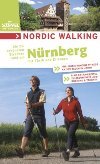
-
 Anglický jazyk
Anglický jazyk
Motorcycle dynamics
Autor: Source: Wikipedia
Source: Wikipedia. Pages: 47. Chapters: Bicycle and motorcycle dynamics, Bicycle and motorcycle geometry, Burnout (vehicle), Cadence braking, Camber thrust, Circle of forces, Contact patch, Cornering force, Countersteering, Engine braking, Highsider, Lowsider,... Viac o knihe
Na objednávku, dodanie 2-4 týždne
17.37 €
bežná cena: 19.30 €
O knihe
Source: Wikipedia. Pages: 47. Chapters: Bicycle and motorcycle dynamics, Bicycle and motorcycle geometry, Burnout (vehicle), Cadence braking, Camber thrust, Circle of forces, Contact patch, Cornering force, Countersteering, Engine braking, Highsider, Lowsider, Motorcycle stunt riding, Pneumatic trail, Racing line, Relaxation length, Self aligning torque, Shaft effect, Slip (vehicle dynamics), Slip angle, Speed wobble, Steering ratio, Stoppie, Suspension (motorcycle), Target fixation, Threshold braking, Tire load sensitivity, Trail braking, Weight transfer, Wheelie. Excerpt: Bicycle and motorcycle dynamics is the science of the motion of bicycles and motorcycles and their components, due to the forces acting on them. Dynamics is a branch of classical mechanics, which in turn is a branch of physics. Bike motions of interest include balancing, steering, braking, accelerating, suspension activation, and vibration. The study of these motions began in the late 19th century and continues today. Bicycles and motorcycles are both single-track vehicles and so their motions have many fundamental attributes in common and are fundamentally different from and more difficult to study than other wheeled vehicles such as dicycles, tricycles, and quadracycles. As with unicycles, bikes lack lateral stability when stationary, and under most circumstances can only remain upright when moving forward. Experimentation and mathematical analysis have shown that a bike stays upright when it is steered to keep its center of mass over its wheels. This steering is usually supplied by a rider, or in certain circumstances, by the bike itself. Several factors, including geometry, mass distribution, and gyroscopic effect all contribute in varying degrees to this self-stability, but long-standing hypotheses and claims that any single effect, such as gyroscopic or trail, is solely responsible for the stabilizing force have been discredited. While remaining upright may be the primary goal of beginning riders, a bike must lean in order to maintain balance in a turn: the higher the speed or smaller the turn radius, the more lean is required. This balances the roll torque about the wheel contact patches generated by centrifugal force due to the turn with that of the gravitational force. This lean is usually produced by a momentary steering in the opposite direction, called countersteering. Countersteering skill is usually acquired by motor learning and executed via procedural memory rather than by conscious thought. Unlike other wheeled vehicles, the primary control input on
- Vydavateľstvo: Books LLC, Reference Series
- Rok vydania: 2019
- Formát: Paperback
- Rozmer: 246 x 189 mm
- Jazyk: Anglický jazyk
- ISBN: 9781234590260


 Nemecký jazyk
Nemecký jazyk 







